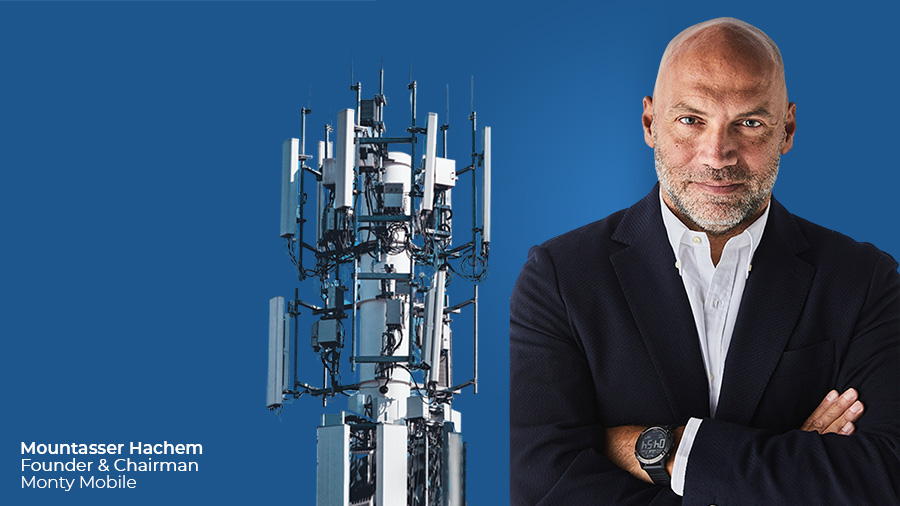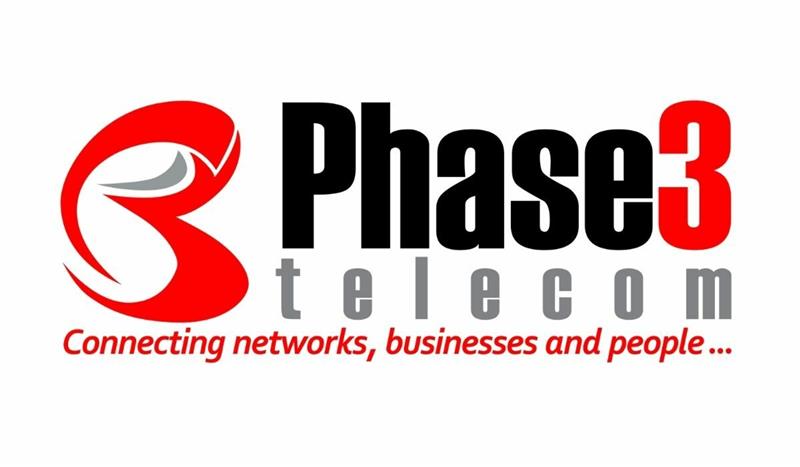Press Releases
Middle East Operators Establish Region’s First Open RAN Centralized Test Lab in Collaboration with TIP and Intel

Batelco and Omantel join five operators in the ground-breaking Open RAN MoU
ABU DHABI, 02 March 2022: Middle East operators have opened the first regional community lab in collaboration with Telecom Infra Project (TIP) and Intel, following the signing of the Open Radio Access Network (Open RAN) MoU last year. The move will accelerate the implementation of Open RAN solutions in their existing telecom networks in order to support the early adoption and development of a robust regional ICT ecosystem.
Two new operators ‘Batelco’ and ‘Omantel’ have also signed the Open RAN MoU, joining the e& formerly known as Etisalat Group, stc, Zain Group, Mobily, and du from Emirates Integrated Telecommunications Company (EITC), in their commitment to deploy Open RAN across their footprint and enhance supreme network experiences for end-users.
The Middle East lab will provide a platform for the parties to jointly deploy open and disaggregated technologies into their networks to optimise the online experiences of businesses and consumers. Flexible, interoperable and standards-based solutions such as OpenRAN present a compelling opportunity for operators to become more efficient in meeting the ever-growing need for high bandwidth, low latency, and advanced connectivity.
The lab will provide shared facilities and access to the most innovative Intel technologies for members and vendors, and catalyst for OpenRAN deployments.
Through the TIP end-to-end process, operators become empowered to deploy more flexible and resilient networks optimised for specific use cases. By sharing industry knowledge to align and prioritise their technical requirements, TIP participants contribute to the creation of centralised technical roadmaps that will set the direction for the development of new network infrastructure products and solutions. Operators can then leverage TIP’s test and validation process to quickly and easily assess those products and solutions that will best contribute to the transformation of their networks.
Mohamed Al Marzooqi, Vice President, Technology Synergies, e& said: “More than ever, our customers rely on high-quality connectivity for their daily requirements. The need for such smart connectivity will only increase in the future. I’m delighted to witness more operators from our region partnering with us in our efforts to position the Middle East as a global leader in developing and deploying such innovative network solutions.
“e& is committed to supporting technology and service innovation within the markets where we operate, through our participation in TIP and our partnership with Intel. We strongly believe open technologies present the right prospects to achieve this, while helping enhance the flexibility and efficiency of our networks.”
Nawaf Al Gharabally, Group’s Chief Technology Officer, Zain, said: “We are pleased to welcome Batelco and OmanTel to the MoU. Through broad regional alignment on OpenRAN and standardisation over Intel technologies, we will provide a clear demand signal to the industry that reflects the needs of our respective markets and customers. The new [Open RAN Labs] is a testament to this. We will work together through this collaborative hub to find solutions that address the specific use cases we encounter in the Middle East and are an essential component to faster commercial deployments. We urge all regional players to join us in this drive to deliver new and innovative solutions.”
Referring to the operator collaboration, Rashid Mohamed, General Manager Networks, Batelco said: “This collaboration and alignment of operators on OpenRAN is a milestone for the telecommunications ecosystem in the Middle East. It will create a more competitive and robust supply chain, leading to faster 5G deployment, network efficiencies, opportunities for new technology vendors, and unlock advanced services for customers. We are pleased to join other like-minded and leading organisations in amplifying innovative opportunities in the region.”
Bernhard Merwe, CTO, OmanTel commented: “OmanTel is excited to be joining this ground-breaking MoU. This is an initiative that will help us deliver on our mission to provide the highest quality connectivity to our customers while also benefiting from the shared experiences of our community in deploying open network technologies. We see a clear opportunity to enhance the way we work with the vendor community and build a more resilient and diverse ecosystem that benefits the region as well as our industry.”
Hisham Alabdaly, GM Infrastructure Design, stc said: “By partnering with TIP, Intel and the operator community in the Middle East, we are helping pioneer a new and innovative approach to developing the solutions that align with our strategic goals and best support the present and future needs of our customers. In doing so, we are also supporting the growth of our local ICT sectors because open network technologies like OpenRAN provide a trusted avenue for new entrants in both the hardware and software space to work with service providers.”
Saleem Al Balooshi, Chief Technology Officer du commented: “du is committed to improving its networks while boosting the digital economy by stimulating greater technological innovation. We are excited to take the next step in accelerating the pace of innovation and promote the development of an open technology that will help to enhance the flexibility, efficiency and security of our networks. This has multiple advantages for the customers as our networks will become highly programmable and automated, so we can foster collaboration and innovation, release new features quickly, provide capacity on demand, automate network management and deliver tailored enterprise solutions.”
Mohammed Al Atawi, VP Technology Governance, Mobily said: “Mobily is already committed to making our vendors active partners in our business operations, and the move towards open network technologies is the next logical step in that journey. We believe the end-to-end process established by the Telecom Infra Project, supported by Intel standard technologies is the best way to ensure we all benefit from the paradigm shift that open and disaggregated technologies represent. We are confident of its cooperative test and validation framework where results and learnings are shared between industry players.”
Referring to the partnerships among regional mobile operators, Caroline Chan, VP, Network and Edge Group & TIP Board Member, Intel said: “This is a great example of how industry collaboration can accelerate the shift toward a software-defined infrastructure at the network edge. A virtualised, Open RAN is an area of tremendous innovation, which can be further propelled by leveraging Intel’s FlexRAN reference architecture with optimised software and hardware components. The lab opens new possibilities to innovate 5G services that can accelerate the digital transformation in the Middle East.”
Vish Mathur, Head of Engagement Telecom Infra Project highlighted the shared responsibility of each telco operator in the successful deployment of Open RAN. He said: “Regional collaborations on Open RAN development, such as the Middle East MoU and the European MoU, clearly illustrate the growing momentum behind disaggregated technologies in our industry.”
He added: “While specific use cases may differ depending on the region, the need for these technologies is universal. TIP and Intel play a key role in this context, bringing together stakeholders from across the world, such as the MoU signatories, to accelerate the development of a critical mass of open and disaggregated network solutions in response to operators’ needs. We hope to see more regional initiatives that leverage TIP and welcome all industry organisations to join our efforts to advance global connectivity.”
Press Releases
Monty Mobile: The First Company in the Middle East & Africa to Provide 5G End-to-End Solutions for Telcos

Monty Mobile provides an in-house, cost-effective, well-optimized 4G+ and 5G end-to-end wireless solution serving both small and large-scale mobile and fixed operators targeting both urban and rural areas.
Moreover, operators are offered flexible payment plans for up to 5 years, first payment after 3 years, helping them stay ahead of their competitors.
This on- cloud solution guarantees improved scalability, mobility and security in addition to great savings on both CapEx and OpEx.
With this solution, Monty Mobile is introducing an alternative to Tier1 Telecom Suppliers such as Ericsson, Huawei, Nokia, and ZTE.
“The best is yet to come; stay connected!”, says Mountasser Hachem, Founder & Chairman of Monty Mobile.
More details regarding this full end-to-end solution will be disclosed in the Inside Telecom magazine next month in an exclusive interview.
Press Releases
Africa’s Leading Independent Telecommunications Services Provider, Phase3 Telecom moves onto Digital Connectivity Enterprise in Nigeria and West African Sub-region

The upgrades will cover security features, performance enhancements. agile update capacity and quality delivery mechanisms.
ABUJA, Nigeria, March 10, 2022: Africa’s leading independent aerial fiber optic network infrastructure and telecommunications services provider, Phase3 Telecom, is enabling advanced digital connectivity, improved performance and enhanced network security for enterprise. This drive is targeted at cost efficient and unified network endpoint management for businesses in Nigeria and the West African sub-region.
This development is also designed to amplify Phase3 enterprise value active network deployments for MSMEs, large scale corporates and institutions.
According to the company’s executive chairman – Stanley Jegede, “this expansive service optimization is targeted at improved coverage on Phase3 network routes through Africa as well as to assure solutions that help businesses transform and scale seamlessly.
He says, “Phase3 current network upgrades is an ongoing exercise and will cover security features, performance enhancements, agile update capacity, and quality delivery mechanisms for enterprise segments. Especially in the areas of productive work-from-anywhere or do-business-from-anywhere and digitized remote connectivity solutions”.
In addition to the company’s focus to increase enterprise based networks data handling capacity and their capability to access data within dissimilar sources faster vis-a-vis smarter, as today’s global clime demands.
Jegede, in his concluding statement says, “Phase3 layered digital capabilities will both enhance Phase3 network architecture and compliment legacy connectivity service experience in remote locations with significant Phase3 presence and network access points.
About Phase3 telecom
Phase3 Telecom is a leading independent fiber optic infrastructure with Points-of-Presence (POPs), colocation, and NOCs in Nigeria. Issued a National Long Distance Operator (NLDO) license in 2003 by the Nigerian Communications Commission (NCC), and with a vibrant as well as a dedicated team of experienced professionals, we are the network of choice for high-performance, data-intensive and low latency connectivity that span dedicated internet access, MPLS VPN, metro ethernet, wide area network solutions etc. We currently operate across the ECOWAS region and international markets through strategic partnerships that allow us to connect our clients across 400 cities worldwide. And ours is an extensive and secure network with end-to-end capabilities that service providers and businesses can rely on to scale, manage costs and assure efficiency. As our network continues to evolve into other layered service streams, including cloud-based and network security solutions – our invaluable clients will continue to remain the core of every investment that we make; innovation that we create; and technology that we adopt during the 4th industrial revolution to position us as the network of the future.
Press Releases
Digital Therapeutics Revenue from Health Insurers to Reach $8 Billion Globally by 2026

Hampshire, UK – 14th March 2022: A new study from Juniper Research has found that digital therapeutics revenue from health insurers will increase to $8 billion by 2026, up from $1.1 billion in 2022; representing a growth of 610 percent over the next four years. Digital therapeutics are clinically validated software programs for the treatment of chronic medical conditions, either independently or in conjunction with other therapies.
The report found that digital therapeutics facilitate the proactive mitigation of chronic medical conditions before they require costly interventions; enabling health insurers to reduce long-term costs per patient. However, it highlighted that these savings will be limited to health insurers in developed regions, where consumer devices and digitalized health infrastructure are ubiquitous. As such, it noted that health insurers in Africa and Latin America will contribute less than 2 percent towards health insurer-led digital therapeutics revenue in 2026.
A new research, Digital Therapeutics & Wellness: Key Trends, Business Models & Market Forecasts 2022-2026, identified that insurers will also benefit from an ongoing shift among digital therapeutics vendors towards engagement- and results-based payments. It recommends that therapeutics providers looking to leverage this trend prioritize the development of performance benchmarks, as demonstrating improvement and preventing patient abandonment will become a direct monetary issue.
Machine Learning to Move into Advisory Role as Liability Issues Emerge
The report forecasts that the number of people using digital therapeutics will increase by 381% over the next four years, and recognizes that machine learning will be key to this growth by facilitating advanced data analytics, remote patient monitoring, and real-time conversational coaching. However, it cautioned that an ongoing lack of standards surrounding the use of machine learning within digital therapeutics will result in vendors limiting its role in their offerings.
Research author Adam Wears explained: “As developers and healthcare providers increasingly grapple with issues of liability and malpractice, machine learning will transition from a patient-facing role to a diagnostic tool offered through provider-facing dashboards; to be used by clinicians and specialists in a manner akin to traditional computer-aided diagnostics.”























